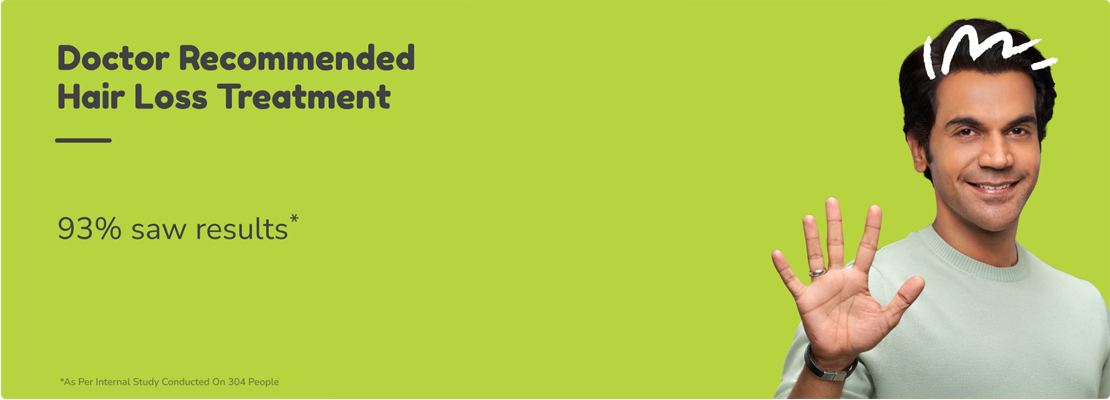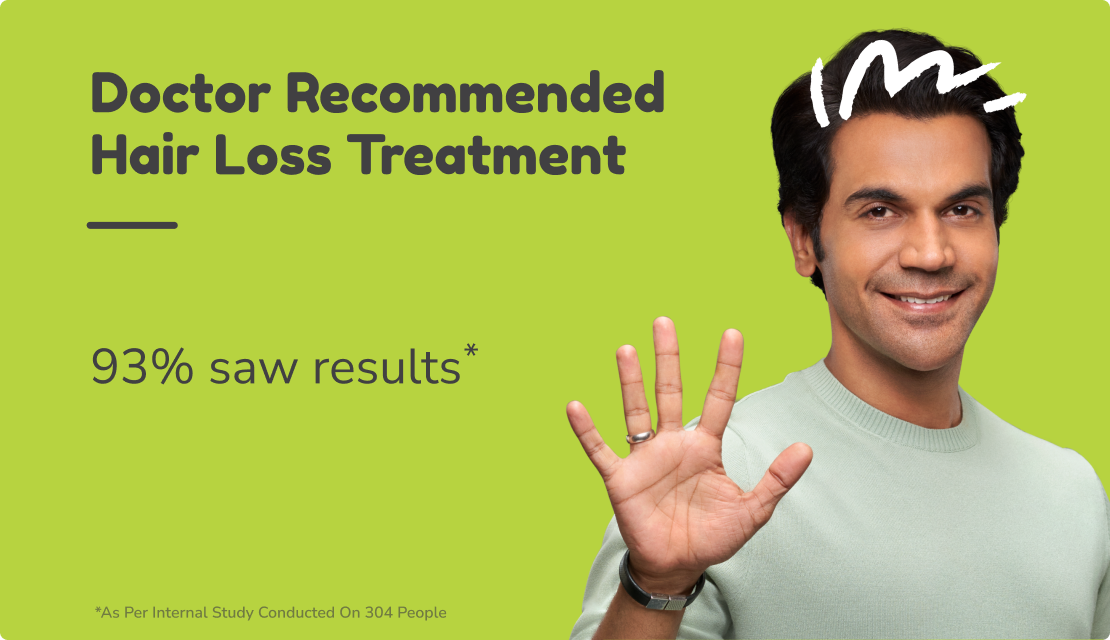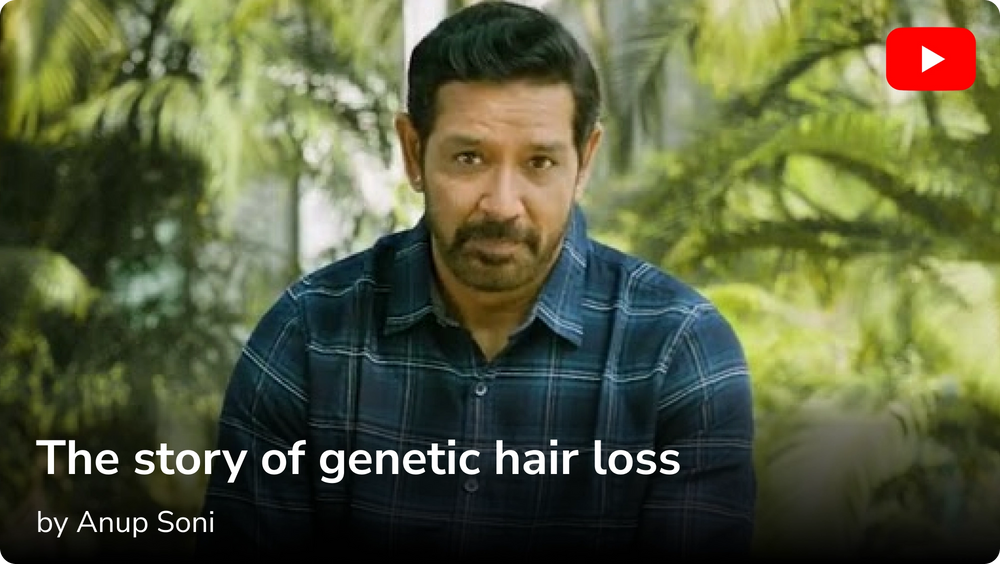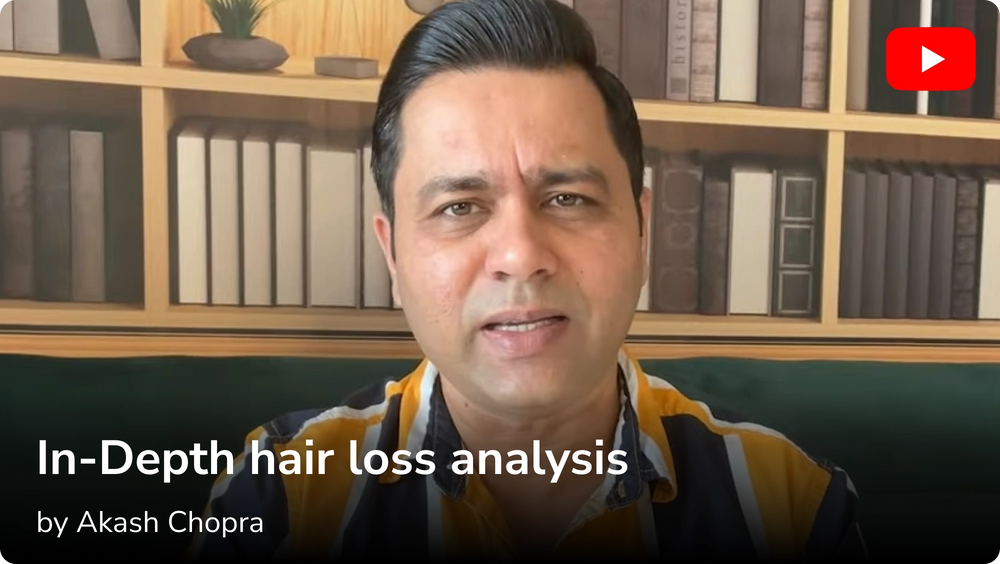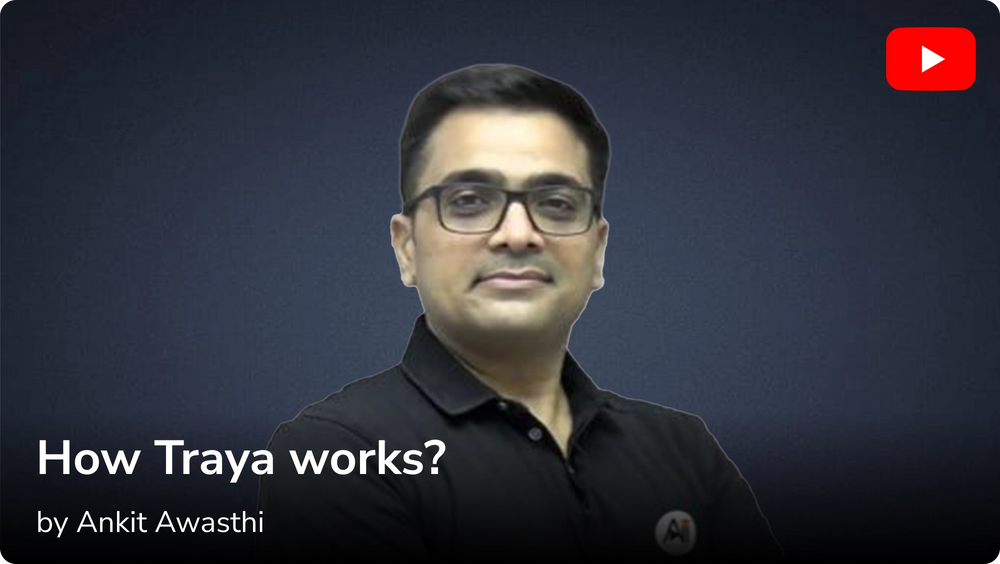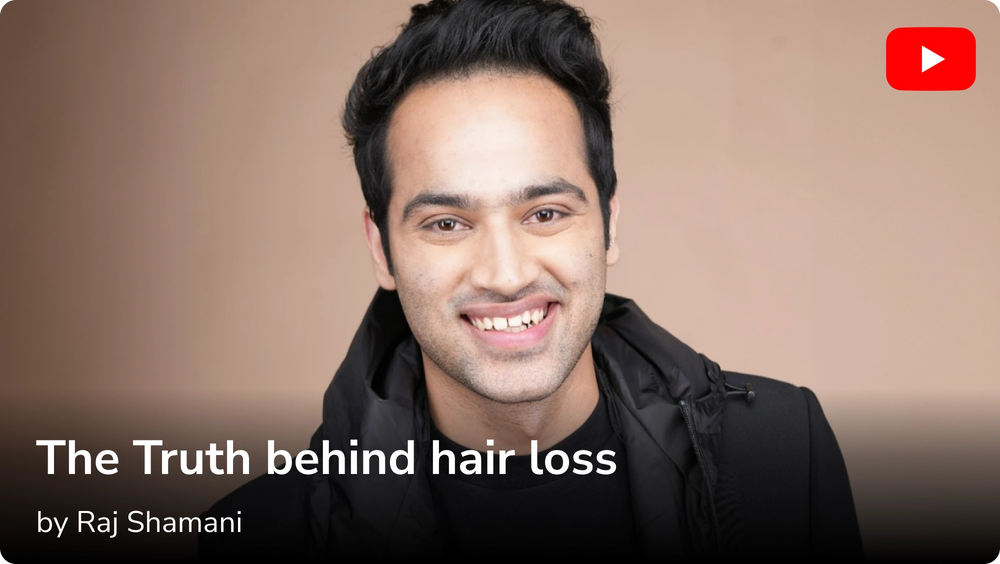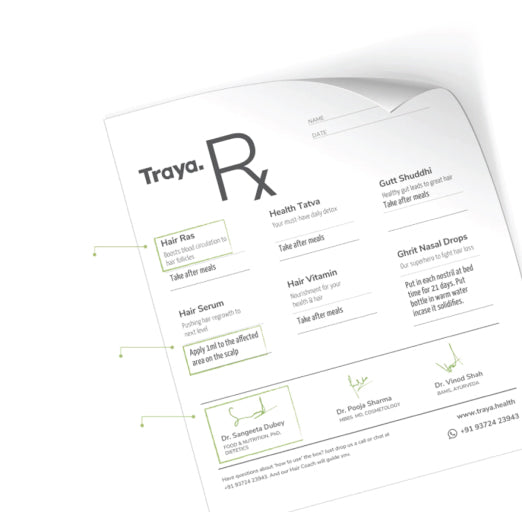Traya’s study highlights a concerning trend: 50.31 Percent of Indian Men Facing Hair Loss Are Below 25 Years of Age. These statistics were brought to light by staggering statistics with respect to the increasing incidence of hair loss occurring with a younger population. The data also states that 50.31% of Indian males who undergo male pattern baldness are aged below 25. Out of all men below 21 years of age, 25.89% belong to stage 3 of the balding pattern or even further. This rises to 33.35% among males aged 21-25. Considering that the mean age of the affected individuals is only 28, this indicates that hair loss has become a major problem for the younger population in India.

Hair loss is a source of worry for millions across the world and people are able to devise various methods to tackle problems such as thinning of the hair or baldness. Two treatments that are often mentioned when talking about these drugs are Redensyl and Minoxidil. Both of these medications are known for their ability to support hair regrowth but tend to function quite differently making them suitable for different patients.
In this article, we shall look at how Redensyl and Minoxidil differ to make the right choice for hair loss management. Not sure where to start? Take Traya's Free Hair Test to get a personalized solution for your hair loss.
Understanding Hair Loss
Loss of hair, or what is commonly referred to as alopecia can result from a number of causes and these will include inheritance, hormones, stress, and poor nutrition among others. Hair and head skin therapies will work at their best when the reason behind the hair loss is dominantly clear. In most of the cases, when people suffer from the loss of hair, they focus on getting back the hair while maintaining its condition. This will make it possible to choose the effective one, as each of the potential products solves the underlying problem differently, in such a way as to match the type of hair loss that you have.
Also Read: Redensyl Side Effects: Benefits, Ingredients, & How to Use
What is Redensyl?
It is a temple hair installation and rejuvenation agent aiming at an intricate remodelling of hair follicle stem cell proliferation, stimulation and differentiation. It mainly contains Dihydroquercetin-glucoside (DHQG), which is inductive to inactivated hair follicles and Epigallocatechin Gallate-glucoside (EGCG2) which ensures hair growth.
- How Redensyl Works: The primary target of Redensyl is the hair follicle, which contains the stem cells responsible for hair growth. Encourages the expansion of the population of these stem cells, leading to the production of new hairs and prolonged anagen (growing) phase of the hair cycle.
- Benefits of Redensyl: Non-hormonal solution that acts straightforwardly on immature dermal papilla mesenchymal stem cells.Safe for users who would want nothing but herbal and nature friendly products. Encourages growth of the hair in a healthier manner and does not produce the effects experienced with hormonal therapies.
- Ideal Candidates for Redensyl: Redensyl is suitable for people in the initiation of hair loss or who want to find an alternative without using medicines. It is also very helpful for anyone who has sensitive scalps or wants to use less chemicals for hair care.
Also Read: Redensyl Side Effects: Benefits, Ingredients, & How to Use
What is Minoxidil?
Minoxidil refers to an FDA approved medicine that is available over the counter for use in the treatments of hair loss. Its potency concentration as medication is two, that is 2% and 5% usually in the form of topical solution or foam. The main purpose of the drug is to encourage the development of new hair follicles, especially in both male and female patients suffering from androgenic alopecia.
- How Minoxidil Works: Minoxidil is classified as a vasodilatator, in that it opens up blood vessels and enhances the circulation of blood to the hair roots. Stimulated circulation also increases the supply of nutrients to the follicles which makes the hair follicles stay in their active phase longer.
- Benefits of Minoxidil: Among clinical conditions where it is approved, it has been proven to cause hair growth. This is especially beneficial for people suffering from androgenetic alopecia (pattern baldness). This is due to the fact that it does not require the use of a prescription and hence many people can use it.
- Cannot recommend Medical Minoxidil to the individuals: Minoxidil is helpful to the patients who already have baldness or advanced thinning of hair. This also fits those who want to undergo a procedure that has already been investigated for years and has the affirmation of the health governing agencies.
Also read: Redensyl For Hair Growth
Redensyl vs Minoxidil: A Comparison of Two Modalities
|
Comparison Point |
Redensyl |
Minoxidil |
|
Mechanism of Action: |
Incorporates strategies that aim to activate specifically hair stem cells and increase the duration of active growth of hair (anagen) phase. It does so by stimulating the inactive hair follicles by its plant extracts. |
Improves blood flow to the scalp and hair follicles, which in turn helps deliver nutrients needed by the hair. It also extends the duration of the anagen phase, but rather through other means. |
|
Efficacy |
A clinical trial has shown observable hair density improvement after three months of Redensyl use. Redensyl can also cause some reduction in the loss of hair. |
It is effective in stimulating hair regrowth in balding men, but it usually takes about 6 months before noticeable results. Some users, especially in the early phase may experience excessive shedding of hair. |
|
Side Effects: |
Andrew does not have side effects or has very few side effects thanks to the natural ingredient used. For individuals with sensitive hair or scalp, Redensyl is easier. |
At the start of adherence to this medication, one may complain about itching of the scalp, as well as dryness, flaking and even hair fall. Some of the users further develop dizziness, or a rapid heart rate when this medication is used consistently. |
|
Safety and FDA Approval |
Approval from FDA outsmarts the use of hair loss therefore guaranteeing the safety of the users intervention. |
Not approved by the FDA but is safe to use hence non toxic and plant derived. That’s why it is usually incorporated into stylish hair products. |
|
Cost Comparison: |
Containing a newer active ingredient, the cost is often however on the higher side and is literally a premium add on to the hair care solutions. |
Because of the rising industrialization, this medication is indeed very cheap and it is very common as it can be non proprietary. |
|
Usage Convenience: |
It’s a leave-on treatment which is generally recommended to be done only once a day. |
Ensuring optimal effects from its application is recommended that the user applies the medication twice every day. This calls for a bit more compromise and focus from the user. |
|
When to Choose |
If you are observing the first signs of hair loss or are in search of a more natural, drug‐free solution with very few side effects, then Redensyl is your suitable option. |
When hair loss is more pronounced (especially in genetically conditioned patients with androgenetic alopecia), Minoxidil is the best option due to its effectiveness and FDA approval. |
Also Read: Minoxidil For Hair Growth: Benefits, Side Effects, Usage
Combining Both Treatments
Some users have turned to combining Redensyl and Minoxidil for better results, but this practice is not recommended without the guidance of a dermatologist. Interestingly, a study comparing the topical RCP combination (Redensyl, Capixyl, Procapil) with Minoxidil for treating Androgenetic Alopecia (AGA) found that the RCP formulation was more effective and satisfactory to patients, with minimal side effects. This suggests that RCP may offer a promising alternative for those concerned about the side effects of Minoxidil, though professional supervision is still essential for safe and effective treatment.

Also Read: What happens after you stop using Minoxidil?
What Traya Recommends (Based on 8 Lakh+ Cases)
At Traya, our approach is driven by science and personalized care. We have analyzed information from over 5 lakh users across India, and our findings have revealed few patterns in the effectiveness of hair loss treatments. The findings reveal that a one-size-fits-all approach simply does not work when it comes to addressing hair loss. Keeping this in practice at Traya our treatment is curated based on the root cause and the stage of hair loss experienced by the individual.
-
63% of users with Stage 3+ hair loss require Minoxidil. Itis particularly effective in stimulating hair regrowth and reversing the progression of thinning. However, to maximize its benefits, Minoxidil is often combined with a Recap solution to support.
-
For those in the early stages of hair loss, the approach is markedly different. 28% of early-stage users achieve great results with Redensyl or herbal-based treatments. These treatments work well because they are meant to support and rejuvenate hair follicles that are still active. The natural formulations help gradual regrowth while minimizing the risk of side effects. Thus they are ideal for individuals who are just beginning to notice hair thinning.
-
9% of cases need internal corrections (gut health, hormonal balance) with a topical serum. By focusing on internal corrections, Traya ensures that the underlying causes are treated, thereby enhancing the effectiveness of external treatments and promoting long-term, sustainable hair regrowth
This is why Traya doesn’t offer one-size-fits-all solutions we prescribe treatments based on your unique needs.
Can I Switch Between Redensyl and Minoxidil?
Many people wonder if they can transition from one treatment to another. Here’s what we recommend:
|
Scenario |
Recommendation |
|
Starting out, mild hair loss |
Redensyl can be a gentle starting point |
|
Stage 3 with visible patches |
Minoxidil is more effective |
|
Sensitive scalp with Minoxidil |
Traya may switch you to Redensyl temporarily |
|
Long-term plan |
Your doctor may rotate ingredients over time |
Early Stages: Mild Hair Loss
For individuals just beginning to notice mild hair loss, a gentle approach is often the most effective starting point. Redensyl, with its subtle formulation, is designed to nurture hair follicles delicately without overwhelming them, making it well-suited for early-stage concerns.
Advanced Stages: Visible Patches
As hair loss advances to a more severe stage, such as Stage 3 where visible patches appear, the treatment strategy needs to become more robust. In these cases, Minoxidil generally offers greater effectiveness in stimulating hair regrowth and addressing the underlying issues that contribute to noticeable thinning.
Sensitive Scalp Considerations
It’s important to note that while Minoxidil is good, it may not be suitable for everyone. Individuals with a sensitive scalp can experience discomfort or irritation when using Minoxidil. In such situations, Traya might temporarily switch the treatment to Redensyl to provide a gentler alternative while still maintaining progress in hair regrowth.
A Long-Term, Adaptive Plan
A key aspect of successful hair loss treatment is maintaining a flexible, long-term plan. As your hair loss condition evolves, your doctor may rotate different ingredients over time, ensuring that the treatment remains aligned with your current needs. This adaptive strategy not only helps in optimizing results but also minimizes any adverse effects, ultimately supporting sustained hair health.
Minoxidil vs Redensyl: Which One Should You Choose?
To determine the best treatment for your hair loss, consider:
Early-Stage Hair Loss: A Gentle Beginning
When your hair loss is just beginning characterized by thinning without any noticeable bald patches Redensyl can be an excellent starting point. Its formulation is designed to gently stimulate hair follicles and promote natural regrowth without being too aggressive. At this stage, the focus is on nurturing the existing hair and encouraging the follicles to remain active, which makes Redensyl an ideal choice. Its mild formulation minimizes the risk of irritation, ensuring that even those who are just noticing the first signs of thinning can begin treatment with confidence.
Moderate to Severe Hair Loss: Advanced Interventions
For those facing moderate to severe hair loss, where bald patches or a receding hairline have already appeared, Minoxidil is typically more effective. This treatment is known for its ability to stimulate hair regrowth and slow the progression of hair loss by increasing blood circulation to the scalp.
Sensitive Scalp Considerations: Choosing the Safer Option
Individuals with a sensitive scalp need to approach treatment with extra care. For these users, Redensyl is often the preferred option because its gentle nature reduces the likelihood of irritation. While Minoxidil can be effective, it sometimes requires the oversight of a dermatologist to ensure that any adverse reactions such as itching or redness are managed promptly.
Hormonal or Stress-Related Hair Loss
Hair loss triggered by hormonal imbalances or high stress levels need a more comprehensive treatment plan that goes beyond topical applications. In these cases, it is important to address internal factors that may be contributing to hair thinning. Traya’s approach integrates internal corrections, such as optimizing gut health and balancing hormones, with targeted topical treatments. By combining internal care with external treatments, this treatment not only promotes regrowth but also tackles the underlying causes of hair loss, leading to more sustainable and long-term improvements.
Still not sure which treatment is right for you? Let Traya’s experts diagnose your condition with precision, providing a science-backed recommendation tailored to your needs.
Hair loss is complex, and the right treatment depends on factors unique to your scalp and body. That’s why Traya’s medical team is here to help. Our experts will analyze your hair loss pattern and prescribe the most effective solution for you.
Take the Test and start your journey toward healthier hair today!
Conclusion
Redensyl in addition to Minoxidil helps patients in regrowing hair through provision of unique benefits, though the best option would depend on the hair loss condition and the preference of the patient.
Before committing to any hair loss treatment, it is very important to know the root cause of your hair loss. Directly jumping to use Redensyl and Minoxidil may help for a while, but results may not last for long.
Traya’s doctor recommended treatment has proven to provide hair loss treatment like no other, 93% of people saw results in 5 months. Our approach combines the goodness of three sciences and multiple ingredients that come from the most authentic sources to address your personalized root cause of hair fall so Take a hair test today!
Also Read: Minoxidil Results - Before and After
FAQs
What happens when both Redensyl and Minoxidil are used?
Yes, Redensyl and Minoxidil may be used together, although the patients should check with their doctor first. Although both preparations are intended to promote hair regrowth, their mode of action is somehow different. Redensyl is a natural substance developed to target hair follicle stem cells, and minoxidil nourishes the hair roots by sending blood to the scalp. There might be synergistic effects by using the two agents, however, using both agents without professional guidance may result in abuse or negative consequences on the skin.
How soon will results show after treatment?
Redensyl: Results usually begin to appear after three months of continued use of the treatment. At this stage, most users will be experiencing some improvement in regard to the hair from minimal hair loss to the first signs of growth.
Minoxidil: Minoxidil treatment usually takes a period of about 3 to 6 months before visible changes in the thickness and density of hair can be noted. Minoxidil: It is common for user’s to notice an initial shedding phase that lasts for several weeks which occurs in the first few weeks, but some patients however may not experience this.
Is there a long-term risk of using Minoxidil or Redensyl?
Minoxidil: While there is continued usage of Minoxidil, there are no serious health risks that can be experienced for a long period of time; It is worth noting that some adverse reactions may be experienced and includes scabs on the scalp, dryness, shooting pains in the scalp which may last for days, temporary loss of hair, or itching of the scalp. Some serious effects that are rarely reported are rapid heart rate, unwanted hair on the face and dizziness. Stopping Minoxidil treatment may result in hair thinning again within months, usually a slow process.
Redensyl: Side effects associated with Redensyl are few or rare since its ingredients are majorly plant based materials. In normal circumstances hair retards over time with continued use of the same drug for several months without any break. However, some patients may have skin sensitivity that leads to irritation. Over time however, like minoxidil there will be gradual hair thinning.






